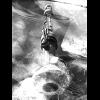All Activity
- Past hour
-
PeterthePapercomPoser started following Simulation Level
-
As a bit of a palette cleanser, I've decided to try writing something really simple and without microtones. This is meant for a videogame stage where the player is tasked with gathering resources or building things. Let me know what you think and thanks for listening!
-
Henry Ng Tsz Kiu started following Old horn notation used in Chinese film music? and Waltz In A Major
-
Hey Peter, I always told you I have no interest in microtones at this stage of my life, but I really find this one more accessible with less apparent usage of microtones, either putting it in the accompaniment or just a bit of taste of it in the melodic part after the tonic key is established. The microtone creates the mood of repose well-living between conscious and unconscious, thus tone to microtone! Henry
-
Chemathmusician0510 started following Old horn notation used in Chinese film music?
-
I just argued with my dad (a very good film composer) over bass clef old notation. He said that he learned it that way and the players who recorded had no problems. Is it because Chinese composers learned from the "russian school" and have little to no contact with the rest of europe or did I missunderstand something. All the online sources say old horn notation is obsolete. Can somebody explain it to me?
- Today
-
Gotcha... You could just add some accents to indicate where the strong beats are when they contradict the meter, since your music isn't following the meter in the way people assume. You can also group notes together with brackets over the top of the bars. Some editors/composers do that to show a hemiola, so people would understand what you meant. And don't worry, I believe you that you can see the video just fine. I've got particularly terrible eyesight. But I'm not the only person who does, so if you can figure out a way to get fewer bars on the screen at once, so everything is bigger, that would probably be helpful. 🙂
- Yesterday
-
The forum refuses to display this one, so here's a link: https://soundcloud.com/user-321964225/experiment-a
-
Three samples:
-
Hi all! This is the same composition as "un canone complesso" but i made it as a duet (clarinet and trombone) + guitar chords. Articulation markings make the piece better. The second player plays same thing or almost same thing than first player, but in A part 4 bars later and in B part 5 bars later. I think A part is better than B part. Duration: 2 minutes Tempo: 142
-
I've made further progress, having discovered a crucial principle behind music composition. The following piece, though very short, is composed with six voices and includes a great deal of so-called xenharmonicity. Better pieces will no doubt follow.
-
I discovered that the base pitch needs to be ideally calibrated for maximally good effect. Here's the the same piece with ideal pitch collaboration. It sounds way better, way smoother and far less dissonant:
- Last week
-
therealAJGS started following ComposaBoi
-
Thanks for the feedback! For some reason I can see it clearly on my phone screen, and using my Grabdpa’s laptop I could see it with YouTube’s highest resolution (1080p), but apparently you can’t see it. If I cut down on the stagger breathe note, maybe that can save some space and expand the rest. For the “Gregorian Chant” comment, I was intending it to be free from meter, not time. The cadencing of the beginning section phrases doesn’t end neatly on 4-8 beat sections, and if you try to feel it like that, the music would feel wonky like swaying on a ship unexpectedly. Is there a way you prefer that it would be phrased?
-
An invention fugue is a musical invention of mine created while I was undergoing a fugue; hence the name. (It might have better been called a fugue invention, but oh well.) At any rate, I've gone back to computer programming to study and create music. My latest creation is, in its core idea, a most unique and interesting one if I do say so myself. The main idea behind it is that melody and harmony are identical to each other except they span different axes. No, I don't mean that a melody is an arpeggiated harmony. If it were, melodies generally wouldn't produce such dissonant and incoherent harmonic progressions when the notes comprising melodies are superimposed. No, the way to turn a harmony into melody or a melody into a harmony is much more complicated and esoteric than that. There is a certain principle whereby one can translate one into the other--and even superimpose the two translations over each other to create a coherent harmonic progression rather than a mere static harmony or a monophonic pitch progression. I have--and I think I am the only one who has done it--discovered the principle that makes doing this possible. Using this principle, I have designed a computer program in which I input harmonies, turning them into melodies and melodies, turning them into harmonies, and in which these two translations are played simultaneously to create counterpoint. The amount of effort involved in using it is very little. All I have to do is provide a small amount of detail, and the program fills out the rest. The piece below is the first remotely serious one I used the program to write. It's very short, and, yes, the instrument that renders it is a harsh-sounding one due to it being the best default instrument. But I think it has some merit to it at least as an illustration of my idea. It should be noted that the piece involves self-imitation, which the principles behind my program, and the program itself, makes pretty easy to implement. There is a motif used once by one voice, slowly, and, at the same time, five times at different pitch heights by another voice. It also has exactly four voices, two of which required a small amount of design on my part (much less than would ordinarily be the case when writing for a pair of voices), the other two of which were generated completely automatically.
-
therealAJGS started following I tried making a horror piece. Any thoughts?
-
mossy84 started following Short Lutheran chorale I made yesterday
-
Gotta say, because my first listen is with 4 movements already available, I thoroughly enjoy listening to all of em! They all feel very connected, of course with the cyclical motif and all, and with the general simple and singing violin style, which in my opinion, you did achieve. You managed to retain and save the lightness of it until the end where it gets a bit heavier, and concluded the whole piece. Overall, goated violin sonata frfr 🗣️💯💯🔥🔥
-
Thank you Mossy for the illuminating and constructive comment. However, Sennheiser HD 650 headphone may be a better choice than your laptop tiny speakers to judge a mix and the sounding of a recording. Indeed, at 29 seconds the english horn, clarinet and trumpet, which are real musicians playing real instruments in Studio One AIR Studios, are doubling the piano for few bars before being replaced by an Armenian Duduk and a reed ensemble, again real musicians playing real instruments but recorded separately in a recording booth. The choice is mine and a agree with myself but there are indeed no obligation for you to like it from laptop speakers that are far from being HIFI. However, the lesson learned here is that I should never record at noon in order to ensure it doesn’t « sound midi-like ». Also, I will ensure during the next recording that musicians uses instruments equiped with an ADSR such that they can adjust the attack time correctly and mostly never record at noon or even midnight. I guess recording at 9 in the morning would sound better. Also, I should stop writing my scores in C-Flat Minor as it cost me a fortune in rehearsal and the musicians are always swearing while reading my music. Try yourself writing in C-Flat Minor and I am sure you will start swearing in 13 languages ;o) Cheers, P.S. midi is noon in French while MIDI is Musical Instrument Digital Interface which obviously you are also using with Jotter.. In DAW We Trust
-
I listened through laptop speakers, so this might have influenced my experience considerably. The use of percussion here is very immersive, but I think whatever instrument you doubled on the piano at around 0:29 kind of broke the immersion a bit as it sounded very midi-like. Perhaps increasing the attack time or the sustain level of the instrument would help?
-
Haven't really written anything in quite some time, but I felt like writing this after imagining the melody. The choice of hymn was arbitrary (just something I already knew), but it was really easy to set to music.
-
.thumb.png.f5c7c1a6a554eeeefdce321d089f5901.png)
A showdown to the heart (cleaned
therealAJGS replied to therealAJGS's topic in Incidental Music and Soundtracks
I have some news! i am creating my own RPG game! (inspired by Undertale and Deltarune) I will be making tracks for the game! -
will make you what the title is.
-
Thanks Chris!
-
Technomage joined the community
-
Could transpose to C Major to avoid one-finger playings between white and black keys, but Noteflight does a bad job of this and I would have to do it note by note; Noteflight has its own ideas as to "enharmonic equivalents!" Anyway, A Major is my favorite key.
-
As to the above comment and the extremely difficult or unplayable chords, if I had to undergo the horrible ordeal of having to edit a piece like this for public performance or publication, I could leave out a note or two, add an arpeggio mark, or some such thing, and such an edit would make little difference in the sound of the music! Noteflight renditions do have a certain sameness of course, but what a tool to have!
-
Thank you!
-
Hey everyone, I wrote a short work based on a particular rocking-up-and-down figuration that I liked while improvising. I guess it's a little bit like an étude w/ respect to technique but I also thought the almost perpetuum-mobile right hand gave it a somewhat toccata-esque feel as well. Hope you find it interesting; and if you have any suggestions/critiques/general comments I'd enjoy reading them!
-
- 2
-


.thumb.png.8b5b433a341551e913a34392660bc95b.png)







